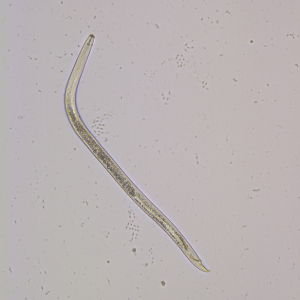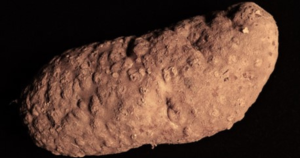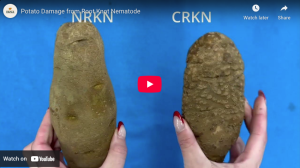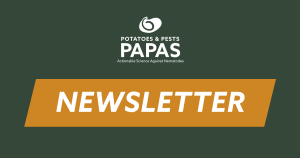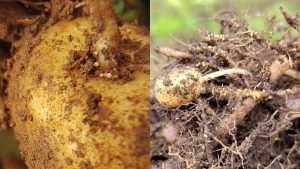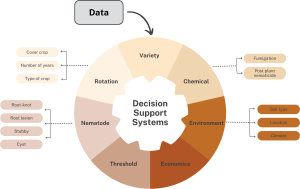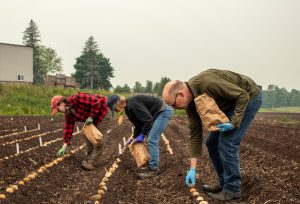Root Lesion Nematode Impact on Potato
Root lesion nematodes (RLN; Pratylenchus penetrans, P. neglectus) are microscopic vermiform or round shaped worms. RLN are migratory endoparasitic nematodes that destructively feed on plant cells, causing massive root tissue necrosis and are linked to the spread of pathogens.
Potatoes are under threat from root lesion nematodes, which can significantly damage the root system of the plant. This results in a reduced ability to absorb water and nutrients, leading to stunted growth and even death in severe cases. Moreover, the weakened root system can make the plant more vulnerable to other diseases and pests, exacerbating the problem.
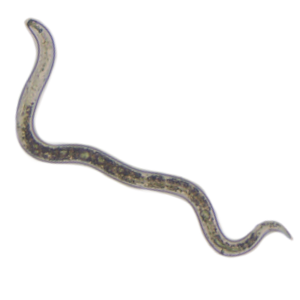
Although conventional management methods such as fumigation have been proven highly effective, they can cause harm to the soil microbiome’s overall health. As a result, both growers and researchers have been exploring alternative and sustainable management programs that involve the use of composted amendments and green manures.
While the mechanism is unknown, Potato Early Die (PED) disease complex has been known to be caused by the RLN species P. penetrans ability to form a synergistic relationship with the fungal plant pathogen Verticillium dahliae in potato cropping systems across North America. PED disease causes significant yield losses and reduced quality of potato crops. The disease affects the plant’s root system, which can result in stunted growth, premature plant death, and reduced tuber size. This can have a major impact on potato growers’ profitability and the availability of potatoes in the market. It is therefore important for growers to take preventive measures to manage their fields for plant parasitic nematodes and Potato Early Die disease.

#3 RANKED FOR GREATEST ECONOMIC IMPACT WORLDWIDE
Detected in ~90% fields sampled in Idaho, Montana, Oregon, and Washington and ~96% fields sampled in Michigan. (Smiley, Richard W. “Root-Lesion Nematodes Affecting Dryland Cereals in the Semiarid Pacific Northwest U.S.A.” Plant Disease, vol. 105, no. 11, 2021)
>350 HOST PLANTS
Including potatoes, wheat, and small grain cereals. RLN is distributed widely, mainly found in temperate regions and sandy soils.
Prevention is the best management strategy
- Find diagnostic support and test soil samples from fields regularly
- Sanitize equipment to prevent the spread of soil infestations
- Plant only clean, certified seed
- Little resistance in commercial varieties
What do they do?
RLN uses its stylet to puncture and feed on roots. RLN develops intracellularly and its migration through the root cells causes necrosis and leads to black lesions forming on roots. Infected fields can experience chlorosis (yellowing), stunted development, and/or low marketable yields.
RLN Characteristics:
- Migratory endoparasitic (penetrate the root and migrate within root cells)
- Dark and defined stylet
- Adults are 300-900 µm and relatively stout
- “Lip” region is flat and blackened
- P. penetrans can develop a synergist relationship with the soil-borned fungus Verticillium dahliae
RLN IS AN INDUSTRY WIDE PROBLEM
- Little resistance in commercial varieties
- Lack of damage thresholds, molecular diagnostics
- Few nematicides are available
